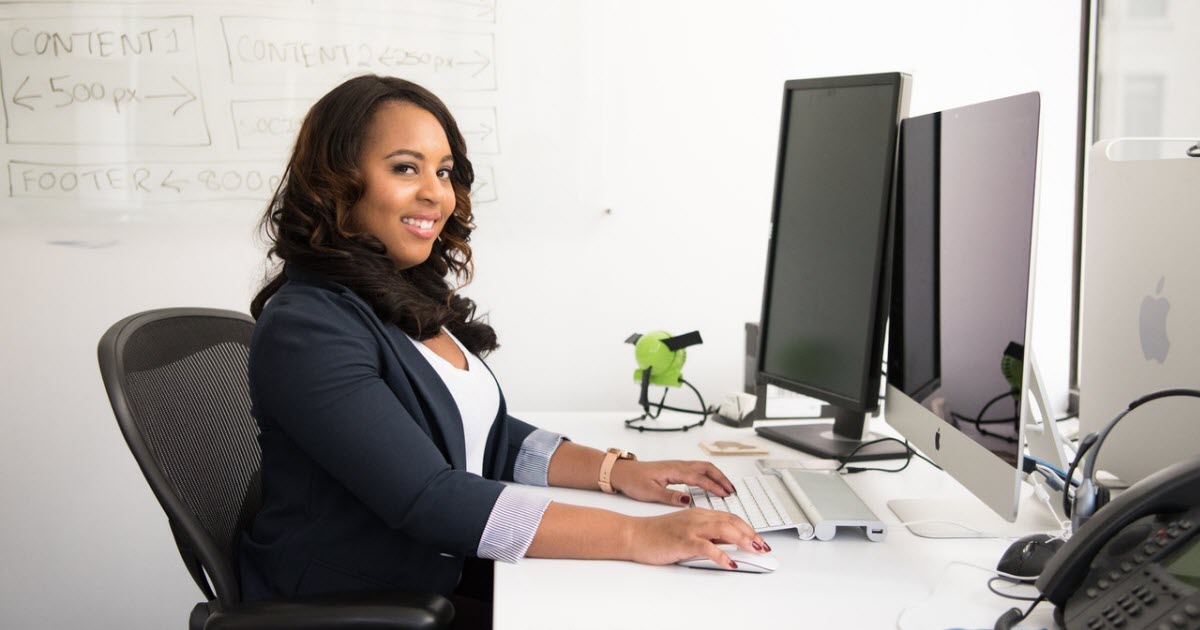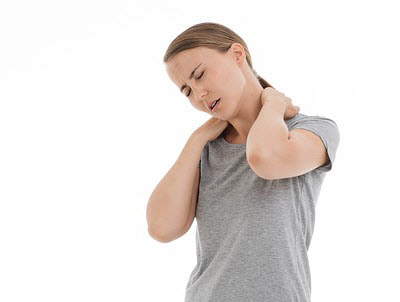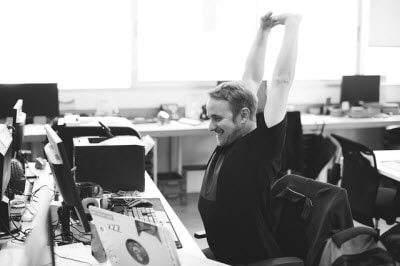Desk Stretches You Can Do Right Now to Ease Aches and Pains
Sitting at a desk all day long is hardly conducive to good posture or good health. Do you notice your shoulders getting tight? Your neck or back getting sore? Legs feeling stiff towards the end of the day?
Regular physical activity is an important part of well-being, especially when you work a desk job. There are also a number of desk stretches that you can do to ease stiff muscles and maintain good range of motion. In this article we'll discuss some of the best desk stretches you can do right now to ease aches and pains. Start With a Proper Posture Assessment
It’s tricky to assess your own posture, but a friend may be able to help you to understand how you're actually sitting at your desk by taking some pictures during the workday. Many people work in poor ergonomic positions with improper posture without even realizing it.
A physiotherapist can also properly assess your posture to help you learn what changes you need to make. The key tool used for this practice is called a plumb line. This can be a physical string hanging from a ceiling with a weight at the bottom to keep it straight, a straight stick, or even just a visualization of a straight line that goes through the very center of our bodies. Our head should sit centered atop our neck, which sits centered atop our shoulders, and so on and so forth. If you try to assess your own posture, start with your head. If you look at yourself from the side, your ears should line up with your shoulders when you’re facing straight ahead. The center of the hips should line up below the shoulders, and the knees and ankles should fall in this alignment as well (when standing). While the stretches below will help to ease discomfort caused by sitting at a desk for extended periods, it is also important to practice good posture and strengthen supporting muscles to enforce good posture. To learn about how to achieve and maintain proper ergonomics, use our free Ergonomic Desk Height Calculator and ergonomic resource page. Head and Neck Stretches You Can Do at Your Desk
Often when we sit at our desk at work we are either hunched over documents or hunched forward staring at a computer screen.
Neither position is good for our neck muscles, which have a big job to support your head. For each inch forward your head is out of alignment, you add 10 pounds of strain on the neck and spine! The neck muscles are constantly contracted to support our head, which itself already weighs 8-10 pounds. If you lean forward 3 inches out of alignment during an 8 hour workday, you're asking your neck to support 38-40 pounds ... that's a lot of weight. The following are examples of stretches for the head and neck (some may also stretch the top of the shoulder) that target muscles such as the top portion of the trapezius, levator scapulae, the scalenes, and sternocleidomastoid. These are stretches you can do right at your desk to alleviate neck pain, and we recommend doing these in addition to correcting issues with your posture.
Desk Stretches for Your Core & Trunk
The trunk of your body is the space from your shoulders to your hips, not including your arms. Desk stretches for your chest and core will help to alleviate stress and strain on muscles in the chest, abdomen, and back.
As we sit all day, we are susceptible to compression in the spinal column due to the cruel forces of gravity. We also lose mobility by staying in one position for extended lengths of time. To maintain mobility and decompress the spinal column here are some simple desk stretches for the trunk:
Desk Stretches for Your Hips and Legs
The hips and legs can grow stiff while we sit immobile all day, even if you have a quality office chair and are sitting in a proper ergonomic position.
This can lead to tight gluteal muscles, which can cause sciatica nerve pain. It can also leave the hip flexors at the front of your hips shortened and tight when you go to stand. Venous blood flow from the legs returns to the heart with the support of the calf muscles, otherwise blood can become stagnant in the legs and increase the risk of blood clots especially for older folks or individuals who are taking certain medications. All this is to say that regularly getting up and moving is important, and stretching your legs and hips at your desk is important too. Here are a few desk stretches you can try to target these areas of your body:
Better Than any Desk Stretch: Move Your Body Regularly
In addition to these stretches, it is important to maintain movement throughout the day to counteract sitting at work.
Take breaks to get up and get a drink of water or coffee, walk around your office for a few minutes to stretch your legs and connect with colleagues. Where appropriate, see if you can make your meeting a standing or a walking meeting. Motion and stretching are key ways to maintaining good physical health, and changing positions throughout your workday could be the best thing you do to ease your aches and pains. If you're interested in learning more about the best products to get you up and moving while working a desk job, we have a whole section of the site dedicated to creating the perfect active workstation. Explore Our Latest Articles on Workplace Wellness and Office Life
0 Comments
Your comment will be posted after it is approved.
Leave a Reply. |
|
© COPYRIGHT 2020. ALL RIGHTS RESERVED.
|
10DESKS.COM IS a participant in the Amazon Services LLC Associates Program, an affiliate advertising program designed to provide a means for us to earn fees by linking to Amazon.com and affiliated sites. Read Our ADVERTISING Policy






